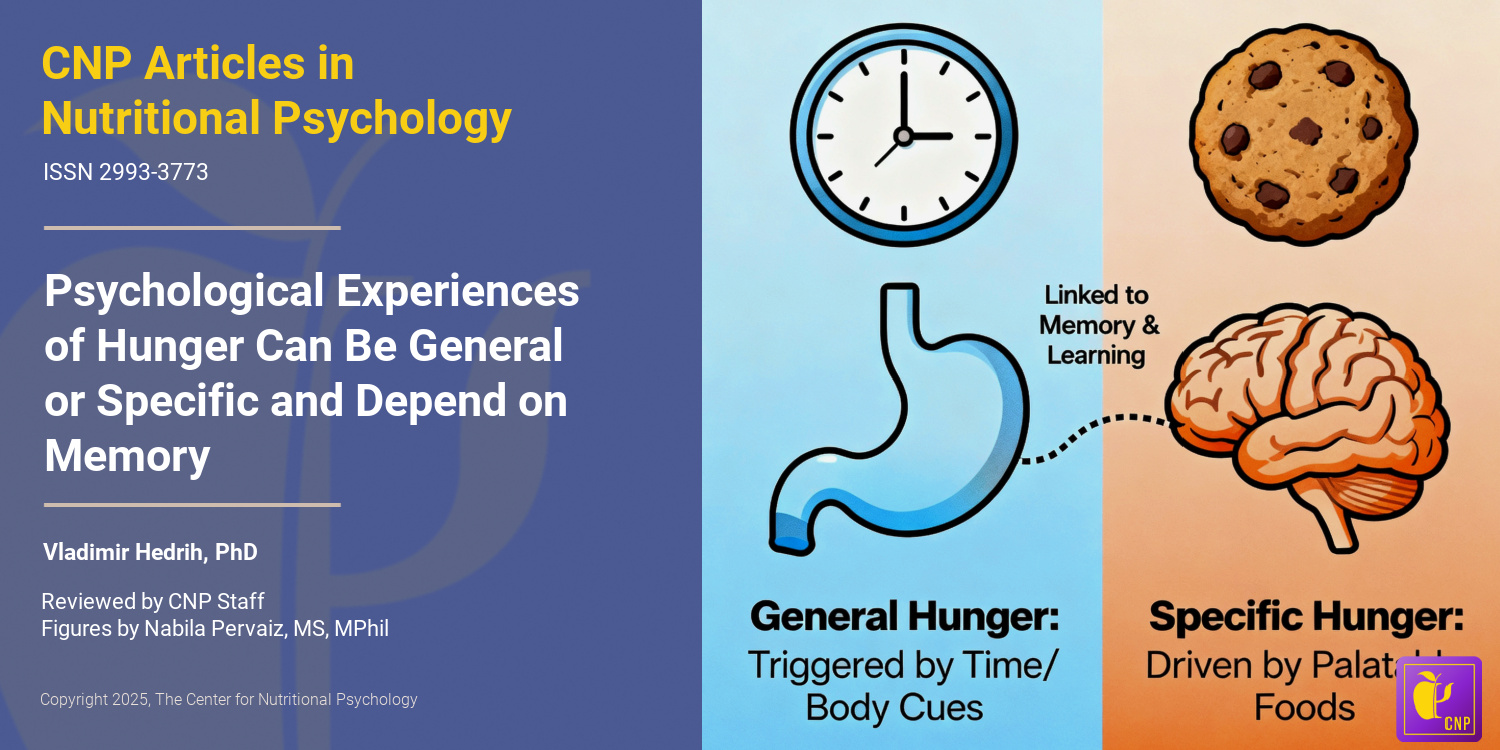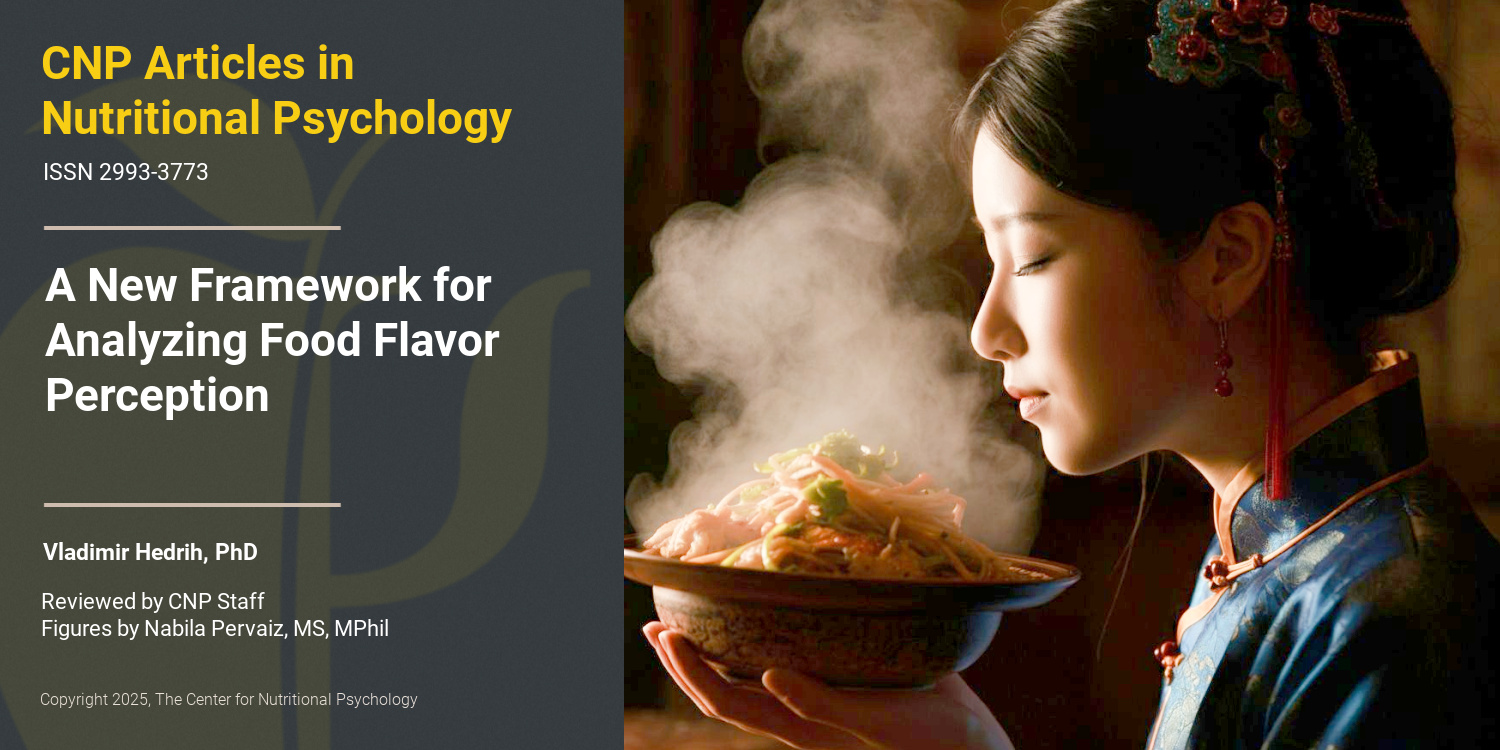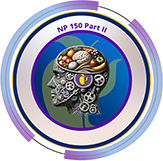Psychological Experiences of Hunger Can Be General or Specific and Depend on Memory

Listen to this Article
- A narrative review published in Nutrition Reviews suggests that there are two distinct types of hunger experiences – general and specific.
- General hunger is a desire to eat triggered by temporal or interoceptive cues.
- Specific hunger is hunger for specific palatable foods.
- Both types of hunger depend on memory and learning mechanisms.
Experiences of hunger are not all the same. For example, after hours of intense physical activity or after not eating for the previous day, we may feel a general urge to eat. Most sorts of food suddenly start looking appealing. On the other hand, we sometimes see or imagine a very palatable food item and suddenly feel a desire to eat it. Very often, we start feeling hungry because it is our usual mealtime.
What is hunger?
Hunger is a psychological state characterized by a desire to eat (Stevenson, 2024). It strongly motivates an individual to seek food and eat it. Initially, researchers believed that it occurs when blood sugar levels drop and the stomach signals the brain to seek nourishment. More recently, feelings of hunger have been linked to an interplay among levels of various hormones, most notably ghrelin.
More recently, feelings of hunger have been linked to an interplay among levels of various hormones, most notably ghrelin.
The Role of Ghrelin in Hunger
Ghrelin is a hormone produced mainly in the stomach that signals hunger to the brain. It was observed in previous studies to rise before meals, stimulate appetite, and fall after eating, indicating fullness. Besides controlling food intake, ghrelin also influences metabolism, sleep, mood, reward-related eating behaviors, and some other processes. Among other things, it was found to stimulate the secretion of the growth hormone (Cowley et al., 2003) (see Figure 1).

Figure 1. Mechanism of Ghrelin in Appetite Regulation
The neural circuit of hunger
The neural circuit of hunger is primarily centered in the hypothalamus, which integrates hormonal and nutrient signals to regulate food intake. The key neural structure is the AgRP (Agouti-related peptide) neuron population in the arcuate nucleus of the brain. The activity of these neurons triggers eating. Recent studies in rodents have found that stimulation of AgRP neurons is sufficient to prompt them to eat (Klima et al., 2023; Sternson & Atasoy, 2014).
The activity of these neurons inhibits another group of neurons that suppresses appetite. They also seem to activate various other brain regions and mechanisms that promote the feeling of hunger. Hormones like ghrelin stimulate AgRP neurons, while leptin (a hormone primarily produced by fat-storing cells, whose levels increase when fat stores are high) and insulin inhibit them. In this way, the organism achieves a balance between satiety and hunger (see Figure 2).

Figure 2. The neural circuit of hunger
The psychological model of hunger
The author of the review, Richard J. Stevenson, argues that models of hunger so far have primarily been physiological. However, this is not sufficient, because hunger is a psychological state. Physiology, he argues, “neither offers a psychological account of hunger nor explains why memory impairment can eliminate hunger“(Stevenson, 2024).
He notes that physiological explanations always end with hunger, leaving unexplained what hunger is. Do people differ in the capacity to experience hunger? How does hunger normally arise? This author cites a famous example of a patient who lost the capacity to form new memories after a lobotomy he underwent in the 1950s. Among other unique things, this patient, unable to remember when he last ate, never complained of hunger while undergoing long, tedious tests, even when the testing occurred during his normal lunch or dinner time. His ratings of hunger during those times also remained the same. Stevenson notes that these types of findings are completely unanticipated by classic physiological explanations of hunger.
Two types of hunger
Stevenson proposes that there are two different types of hunger.
Specific Hunger
The first type of hunger is specific hunger. This type of hunger links specific food cues to individual palatable foods. In simpler words, people learn to associate specific stimuli (smells, sights, sounds, times, locations…) with certain palatable foods. Perceiving these cues reminds an individual of the palatable food it is associated with, triggering the sensation of hunger. Stevenson states that previous authors attributed the discovery of this type of hunger to the famous Russian physiologist Ivan Pavlov. Specific hunger is also referred to in literature as appetite, head hunger, or hedonic hunger.
People learn to associate specific stimuli (smells, sights, sounds, times, locations…) with certain palatable foods.
General Hunger
The second type of hunger is general hunger. It is more difficult to define. As previously mentioned, classic views hold that this type of hunger signals that the body’s energy stores are low and need replenishment. However, most individuals have energy reserves that allow them to survive 4-6 weeks without food intake, while people usually feel general hunger several times a day. This makes it very unlikely that the explanation of general hunger in terms of energy reserves is true.
Additionally, through evolution, it was very advantageous for people to be able to eat when food was available (as it often was not), as long as it did not overload the digestive system. This means that it makes more sense for the feeling of general hunger to be associated with whether the stomach/gut is empty or full, rather than with energy reserves.
Interoceptive and Temporal Cues in General Hunger
Based on all this, Stevenson proposes that two major categories of cues trigger general hunger.
1. Interoceptive Cues
The first category is interoceptive cues, i.e., signals from the body that individuals interpret. However, there appears to be pronounced variability among individuals in how they interpret interoceptive cues. Stevenson states that a sizeable minority — perhaps 20% — do not seem to use stomach contraction as an interoceptive hunger cue.
People also report different internal sensations as their triggers for general hunger. These include moods, emotions, oral and abdominal sensations, irritability, dizziness, and others. But how do these signals create a desire to eat? Stevenson argues that learning and memory are involved. Over the years, people have eaten foods of different palatability in the presence of various interoceptive cues. In time, they learn to interpret the presence of some interoceptive cues as meaning that food in general would be good for them now. In this way, these food cues bring positive memories of eating to mind, triggering a desire to eat again. This is supported by the finding that people with a type of dementia that damages the semantic memory system are no longer able to interpret interoceptive cues for hunger.
2. Temporal Cues
The other type of cue for general hunger is temporal cues. Not much is known about them, but Stevenson cites studies that support the idea that humans can learn the relationship between time and hunger, leading them to feel hungrier at mealtimes.
Conclusion
In general, this review argues that there are two types of hunger: specific and general. Experiences of both types of hunger depend on memory and learning. Humans learn to experience specific hunger by learning cues associated with individual palatable foods. In contrast, general hunger involves learning to associate certain interoceptive signals and times with positive emotions related to food.
Potentially, the involvement of memory and learning in the experience of hunger suggests that hunger and its related experiences can be taught. This means that interventions designed to counter eating disorders or obesity could include teaching new food and hunger-related cues that lead to healthier eating behaviors.
The paper “The psychological basis of hunger and its dysfunctions” was authored by Richard J. Stevenson.
References
Cowley, M. A., Smith, R. G., Diano, S., Tschöp, M., Pronchuk, N., Grove, K. L., Strasburger, C. J., Bidlingmaier, M., Esterman, M., Heiman, M. L., Garcia-Segura, L. M., Nillni, E. A., Mendez, P., Low, M. J., Sotonyi, P., Friedman, J. M., Liu, H., Pinto, S., Colmers, W. F., … Horvath, T. L. (2003). The Distribution and Mechanism of Action of Ghrelin in the CNS Demonstrates a Novel Hypothalamic Circuit Regulating Energy Homeostasis. Neuron, 37(4), 649–661. https://doi.org/10.1016/S0896-6273(03)00063-1
Klima, M. L., Kruger, K. A., Goldstein, N., Pulido, S., Low, A. Y. T., Assenmacher, C. A., Alhadeff, A. L., & Betley, J. N. (2023). Anti-inflammatory effects of hunger are transmitted to the periphery via projection-specific AgRP circuits. Cell Reports, 42(11). https://doi.org/10.1016/j.celrep.2023.113338
Sternson, S. M., & Atasoy, D. (2014). Agouti-related protein neuron circuits that regulate appetite. Neuroendocrinology, 100, 95–102. https://doi.org/10.1159/000369072
Stevenson, R. J. (2024). The psychological basis of hunger and its dysfunctions. Nutrition Reviews, 82(10), 1444–1454. https://doi.org/10.1093/nutrit/nuad092
 Navigation
Navigation











Leave a comment